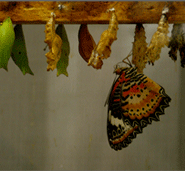Conversations with artists, musicians, actors, film makers and curators on their eccentric journeys, their absurd dreams, and the manifestation of their desires and destinies...
"What we call the beginning is often the end. And to make an end is to make a beginning." And with T.S.Eliot in our heads we wander into a wasteland where the lost and the forgotten are reinvented so that Nostalgia gives way to Now in the Future Perfect.
To celebrate a year of exhilarating stories, eccentric subjects and thoughtful writers, The Fuschia Tree brings you a two-part anniversary issue featuring conversations with established practitioners in the arts, who reflect upon their first days as artists, their obsessions, their dreams and the blurring boundaries between their art and their life.
We access the lives of these artists, their everyday inspirations, their habits or phobias as a way to access their (he)art. When we know their fetishes, their travels, how they like their eggs, we get a whiff of their work because we get a sense of their person.
Our second-part features intriguing figures such as Raqs Media Collective, Aradhana Seth, Sudhanva Deshpande and Dr. Alka Pande. We begin the year with this collection of established practitioners in diverse creative fields to inspire and ignite reformed thought, philosophies for the New, ideologies of the Later and a surge to move onwards with patience and weight.
While some would argue that one must never give up, Raqs reminds us of the importance of "learning where to stop". They examine, in its profound qualities of geometry and ritual, the powerful qualities of the number 3, the infinity of numberlessness and the constant ring of thought, circling eves and posts, waiting for rubble to resurrect as something else. They turn to their first days of long nights of conversation and their first work as they reflect on the singular, plural and the multiple. In the very form of their answers, their manner of thinking is revealed: it begins in the trunk of the matter, and transpires outwards, everywhere and into the unknown. No wonder neurons look like branches.
Aradhana Seth, in her photographs and her text, reveals a gorgeous story of a young girl brought up in a vibrant atmosphere of literature, debate and art. In the multiple places she has lived and the multiple modes of art, film and activist, she "likes seeing all angles", reaching beyond the object, "into the memory, the longing, the loss of it". Yet, this is done not only by reaching into the past or yearning for an imminent future, for shapes are everywhere, waiting only to be re-shaped: "Later is Now".
Sudhanva Deshpande talks about how "The life of a play not simply between the performer and the spectator during a performance and but lives on among spectators as a response to the play which comprise the act of theatre", why cycling is the future, and inspirations found in earthly dramas on the street.
And finally, Dr. Alka Pande tells a private tale of her foray into erotica at an age when India was hardly ready for it, and the anecdotal coincidences that led her deeper and deeper into the beauty of the body and its gesture.
Our issues thus far have tackled existential themes from memory to love, to mythology, food, humor, travels, beauty, fiction, architecture and more. Through art, they hope to proclaim a way of life. A way of life that does not simply look, but also sees. A way of life that does not merely search for answers, but revels in questions. And a way of life that celebrates beauty in ruin, in the things in between, in the long-gone or the yet-to-be. A way of life that lives in the material even as it imagines its own outward potential.
We hope you will join us in sharing our community of contemporary arts with others that take pains to read and live slowly, with love.
With pause,
Himali.
Editor's Note.
Every sunbeam, every strain of music, every sapling and starfish is ultimately the regeneration of a previous something, a collection of somethings, taking on new shape. At the most indivisible level we can comprehend, all life is nothing more than atoms and molecules dancing their way through various forms. And if everything comes from something, it stands to reason that everything must go to something as well.
Read More
Illusion: Seeing Beyond Seeing
Meaning: In Search of Significance.
Melody: A Different Tune
Rhythm: Ordering Time


